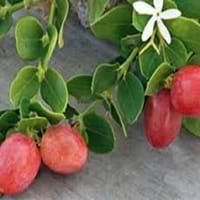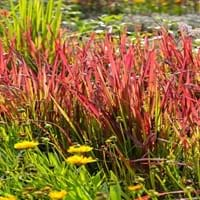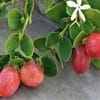Life Span
Perennial
Perennial
Origin
Central Asia, Southern Asia, Western Ghats, India
Japan
Types
congesta, paucinervia
Not Available
Number of Varieties
Not Available
Habitat
Fertile bottom land, moist forests, Temperate Regions, Tropical Forests
Moist Soils, River side, yards
USDA Hardiness Zone
Not Available
5-9
Sunset Zone
Not Available
2b, 3a, 3b, 4, 5, 6, 7, 8, 9, 10, 11, 12, 13, 14, 15, 16, 17, 18, 19, 20, 21, 22, 23, 24
Habit
Upright/Erect
Upright/Erect
Flower Color
Pale White, White
Not Available
Flower Color Modifier
Bicolor
Bicolor
Fruit Color
Purple, Black
Non Fruiting Plant
Leaf Color in Spring
Green
Light Green
Leaf Color in Summer
Green
Light Green
Leaf Color in Fall
Green
Green, Sienna
Leaf Color in Winter
Light Green
Tan
Plant Season
Spring, Summer, Fall
Not Available
Sunlight
Full Sun, Partial Sun, Partial shade
Full Sun, Partial Sun
Type of Soil
Loam
Clay, Loam, Sand
The pH of Soil
Acidic, Neutral, Alkaline
Acidic, Neutral, Alkaline
Soil Drainage
Well drained
Average
Bloom Time
Spring
Late Summer
Tolerances
Drought
Drought, Salt
Where to Plant?
Ground
Ground
How to Plant?
Seedlings, Stem Cutting
From Rhizomes, Seedlings
Plant Maintenance
Medium
Medium
Watering Requirements
Keep the ground moist but not water-logged
Average Water Needs, Keep the ground moist but not water-logged
In Summer
Lots of watering
Lots of watering
In Spring
Moderate
Moderate
In Winter
Average Water
Average Water
Soil pH
Acidic, Neutral, Alkaline
Acidic, Neutral, Alkaline
Soil Type
Loam
Clay, Loam, Sand
Soil Drainage Capacity
Well drained
Average
Sun Exposure
Full Sun, Partial Sun, Partial shade
Full Sun, Partial Sun
Pruning
Prune if you want to improve plant shape, Remove dead leaves
Prune once the plant is tall enough, Remove damaged leaves, Remove dead branches, Remove dead leaves
Fertilizers
Compost, fertilize in growing season
can go long without fertilizers, Doesn't require fertilization when grown in rich soil
Pests and Diseases
Aphids, Earwigs, Insects, Mildew, Red blotch, Rust, sawflies
Not Available, Red blotch
Plant Tolerance
Dry soil, Heat And Humidity
Deer resistant, Drought, Full Sun, Shade areas
Flowers
Insignificant
Insignificant
Flower Petal Number
Single
Single
Foliage Texture
Medium
Medium
Foliage Sheen
Matte
Matte
Attracts
Birds, Butterflies, Fruit Bats
Not Available
Allergy
Eczema, Mouth itching, Throat itching
Not Available
Aesthetic Uses
Not Available
Ground Cover
Beauty Benefits
good for lips, Remove blemishes
Not Available
Edible Uses
Yes
Not Available
Environmental Uses
Air purification, Food for animals, Food for birds, soil stabilisation
Air purification
Medicinal Uses
Anemia, Diuretic, Potassium, Rich in Iron, Vitamin C
Not Available
Part of Plant Used
Fruits, Leaves
Leaves, Root
Other Uses
Added to salads, Cosmetics, Culinary use, Used as a nutritious food item, Used As Food, Used for its medicinal properties
Traditional medicine, Weaving into Mats and Bags
Used As Indoor Plant
No
Yes
Used As Outdoor Plant
Yes
Yes
Garden Design
Edible, Fruit / Fruit Tree, Hedges
Not Available
Botanical Name
Carissa carandas
IMPERATA cylindrica
Common Name
Black Currant
Japanese Blood Grass
In Hindi
करोंदा, कालि मैना
Japanese Blood Grass
In German
Carandas
Japanische Blut Grass
In French
karondas
Herbe de sang japonais
In Spanish
karondas
Hierba de sangre japonesa
In Greek
karondas
Ιαπωνικά Grass αίματος
In Portuguese
karondas
Grama sangue japonês
In Polish
karondas
Japoński Krew Trawa
In Latin
karondas
Sanguinem Italica Grass
Phylum
Magnoliophyta
Magnoliophyta
Class
Magnoliopsida
Liliopsida
Order
Gentianales
Cyperales
Family
Apocynaceae
Poaceae
Clade
Angiosperms, Asterids, Eudicots
Angiosperms, Commelinids, Monocots
Tribe
Not Available
Not Available
Subfamily
Not Available
Not Available
Number of Species
Not Available
Not Available
Importance of Karonda and Japanese Blood Grass
Want to have the most appropriate plant for your garden? You might want to know the importance of Karonda and Japanese Blood Grass. Basically, these two plants vary in many aspects. Compare Karonda and Japanese Blood Grass as they differ in many characteristics such as their life, care, benefits, facts, etc. Every gardener must at least have the slightest clue about the plants he wants to plant in his garden. Compare their benefits, which differ in many ways like facts and uses. The medicinal use of Karonda is Anemia, Diuretic, Potassium, Rich in Iron and Vitamin C whereas of Japanese Blood Grass is Not Available. Karonda has beauty benefits as follows: good for lips and Remove blemishes while Japanese Blood Grass has beauty benefits as follows: good for lips and Remove blemishes.
Compare Facts of Karonda vs Japanese Blood Grass
How to choose the best garden plant for your garden depending upon its facts? Here garden plant comparison will help you to solve this query. Compare the facts of Karonda vs Japanese Blood Grass and know which one to choose. As garden plants have benefits and other uses, allergy is also a major drawback of plants for some people. Allergic reactions of Karonda are Eczema, Mouth itching and Throat itching whereas of Japanese Blood Grass have Not Available respectively. Having a fruit bearing plant in your garden can be a plus point of your garden. Karonda has no showy fruits and Japanese Blood Grass has no showy fruits. Also Karonda is not flowering and Japanese Blood Grass is not flowering . You can compare Karonda and Japanese Blood Grass facts and facts of other plants too.





